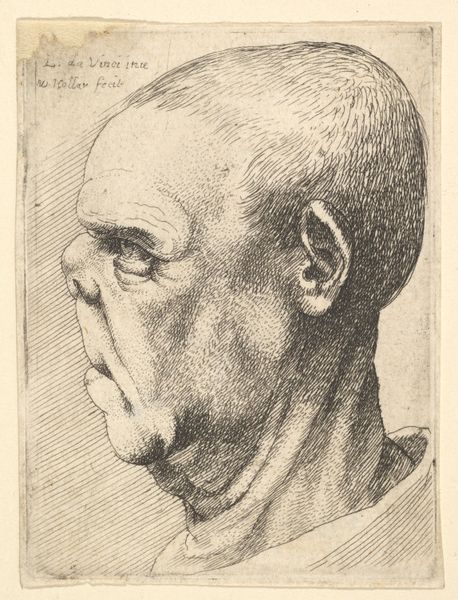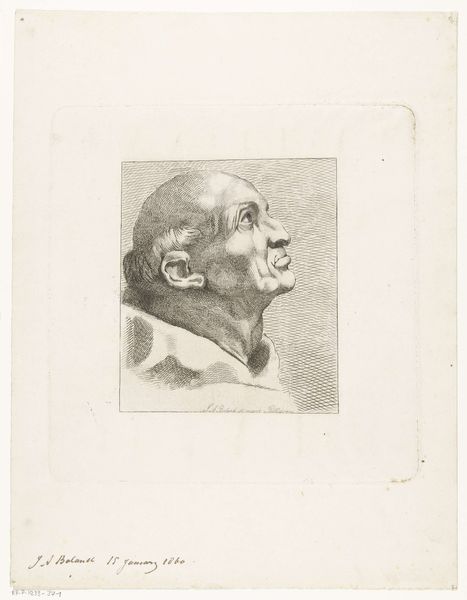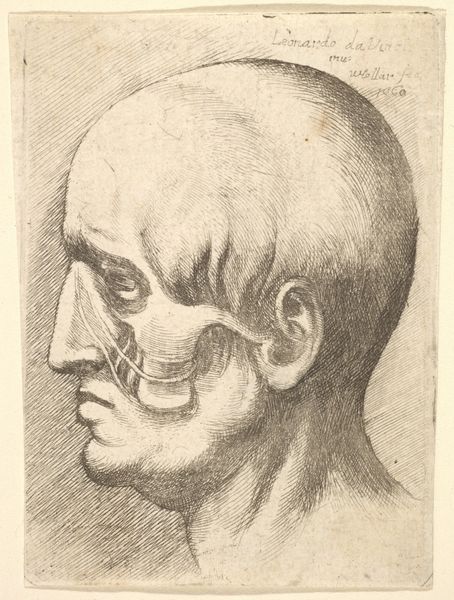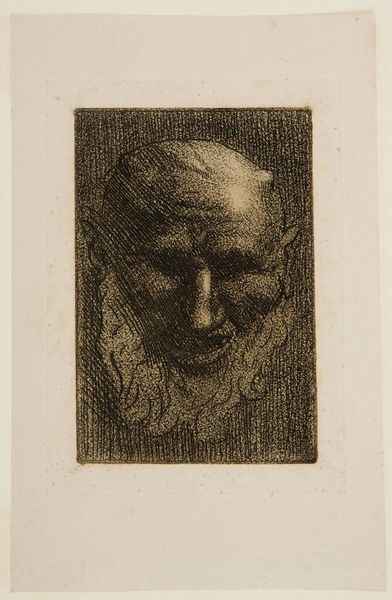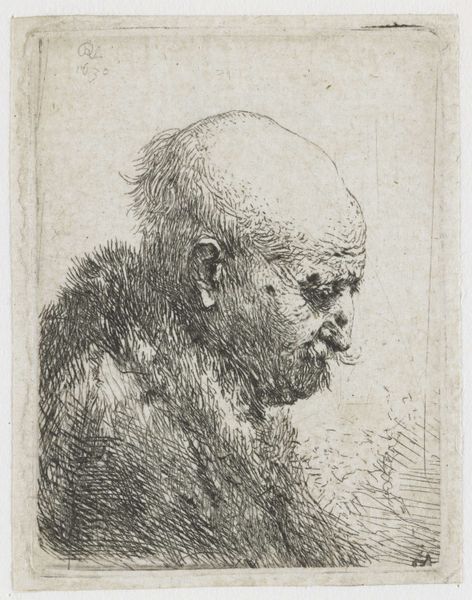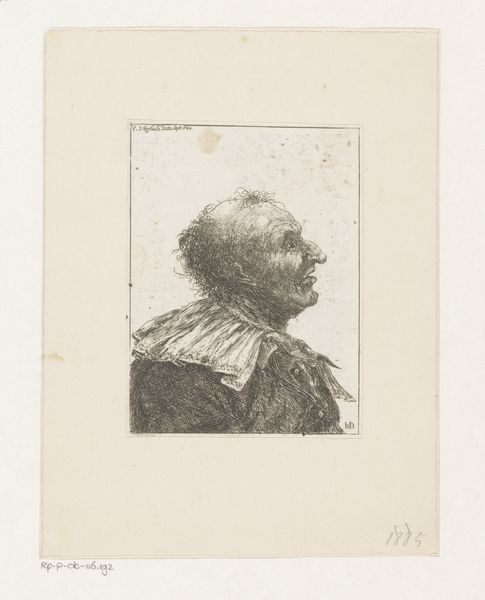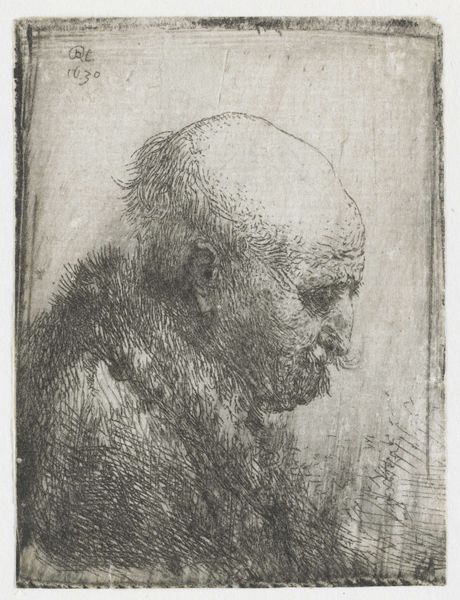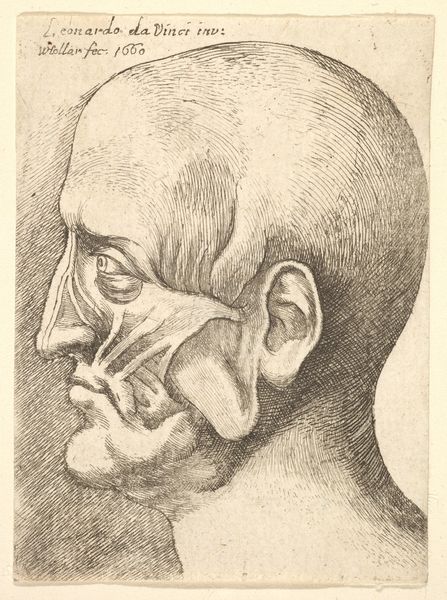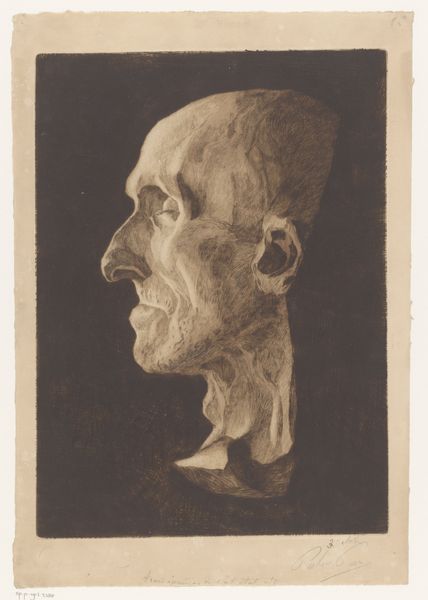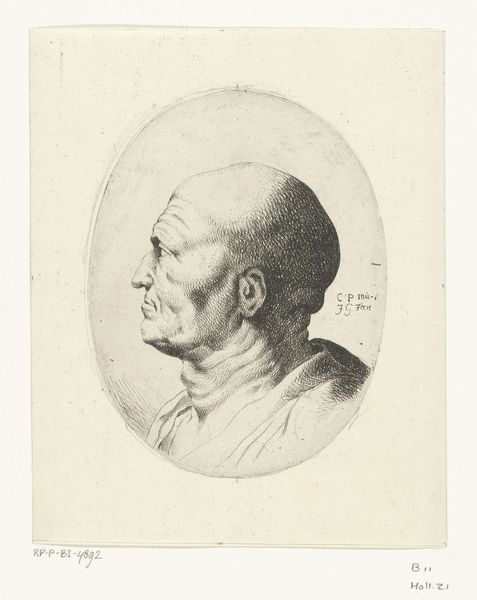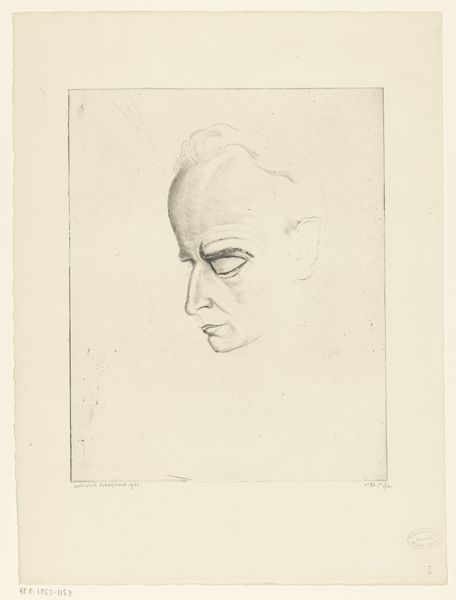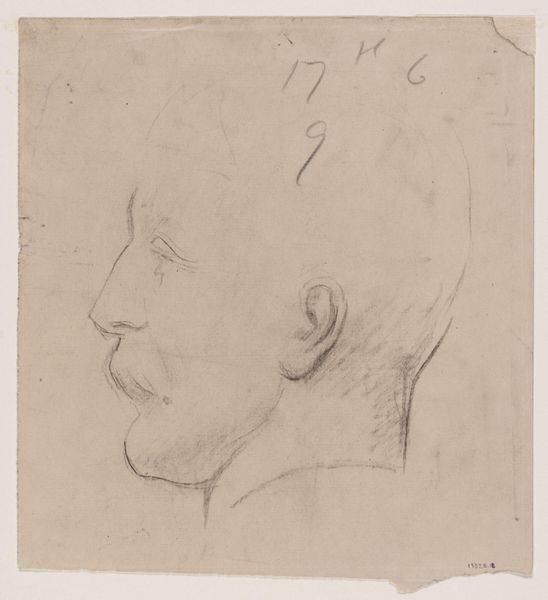
Portret van filosoof, staatsman en toneelschrijver Lucius Annaeus Seneca 1766 - 1831
0:00
0:00
drawing, pencil, engraving
#
portrait
#
drawing
#
light pencil work
#
pen illustration
#
pen sketch
#
pencil sketch
#
old engraving style
#
figuration
#
personal sketchbook
#
ink drawing experimentation
#
ancient-mediterranean
#
pen-ink sketch
#
pencil
#
line
#
sketchbook drawing
#
pencil work
#
history-painting
#
engraving
Dimensions: height 84 mm, width 100 mm
Copyright: Rijks Museum: Open Domain
Curator: Here we have Willem Bilderdijk's "Portret van filosoof, staatsman en toneelschrijver Lucius Annaeus Seneca," a drawing from between 1766 and 1831. Editor: It’s quite striking, isn’t it? The man’s profile seems both severe and weary. There's a certain weight to it, especially in the etched lines around his eyes. Curator: Bilderdijk was, of course, working within a particular historical context, influenced by the Enlightenment's renewed interest in classical antiquity and its figures. Seneca, the Stoic philosopher, became a symbol of moral virtue and reasoned thought, subjects greatly favored at the time. Editor: Yes, but Seneca was also a political figure complicit in imperial power! Doesn’t his presence in Enlightenment discourse then become about justifying a new kind of authority? What kind of virtue are we celebrating when the original version has this shadow of being near emperors and being a political player? Curator: That’s precisely the kind of complex engagement the artist asks us to confront! Bilderdijk's sketch presents Seneca in this austere, neoclassical manner, which aligns with the period’s artistic ideals, reflecting themes of reason, order, and virtue associated with classical subjects. Editor: Bilderdijk has distilled Seneca to almost caricature—the high forehead, pronounced nose, and somewhat downcast mouth make you wonder what his perspective really was. The engraving, I imagine, was done at a scale small enough to reflect that level of intimacy... like finding humanity or at least trying to find that common understanding. Curator: You're pointing to something significant. The drawing captures a certain psychological intensity despite its small size. The material - pen and pencil sketch- also makes for a study and an accessible aesthetic that almost invites closer looking as a result of this closeness to real feeling that seems contemporary in spite of being neo classical. Editor: So, this isn't just about historical representation; it's about the continual reimagining and re-evaluating the past in light of contemporary sociopolitical concerns. Thanks for sharing. Curator: A worthwhile paradox. Thanks for helping think this through.
Comments
No comments
Be the first to comment and join the conversation on the ultimate creative platform.
